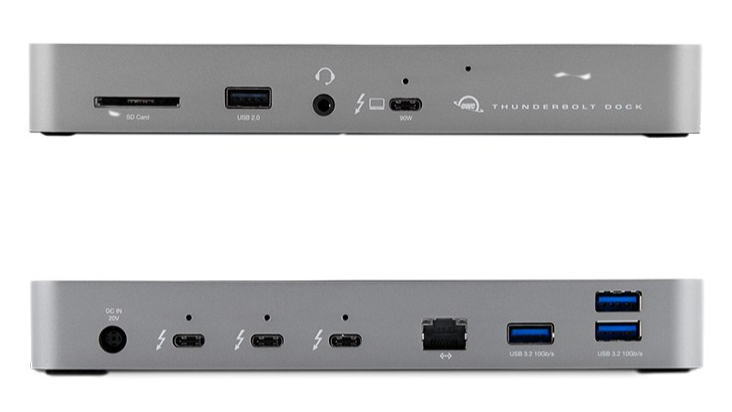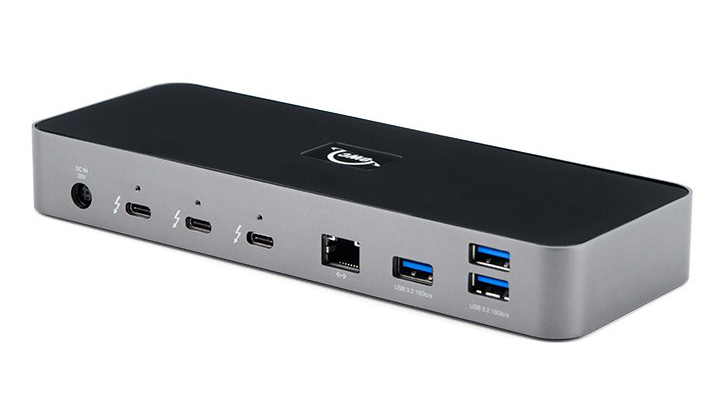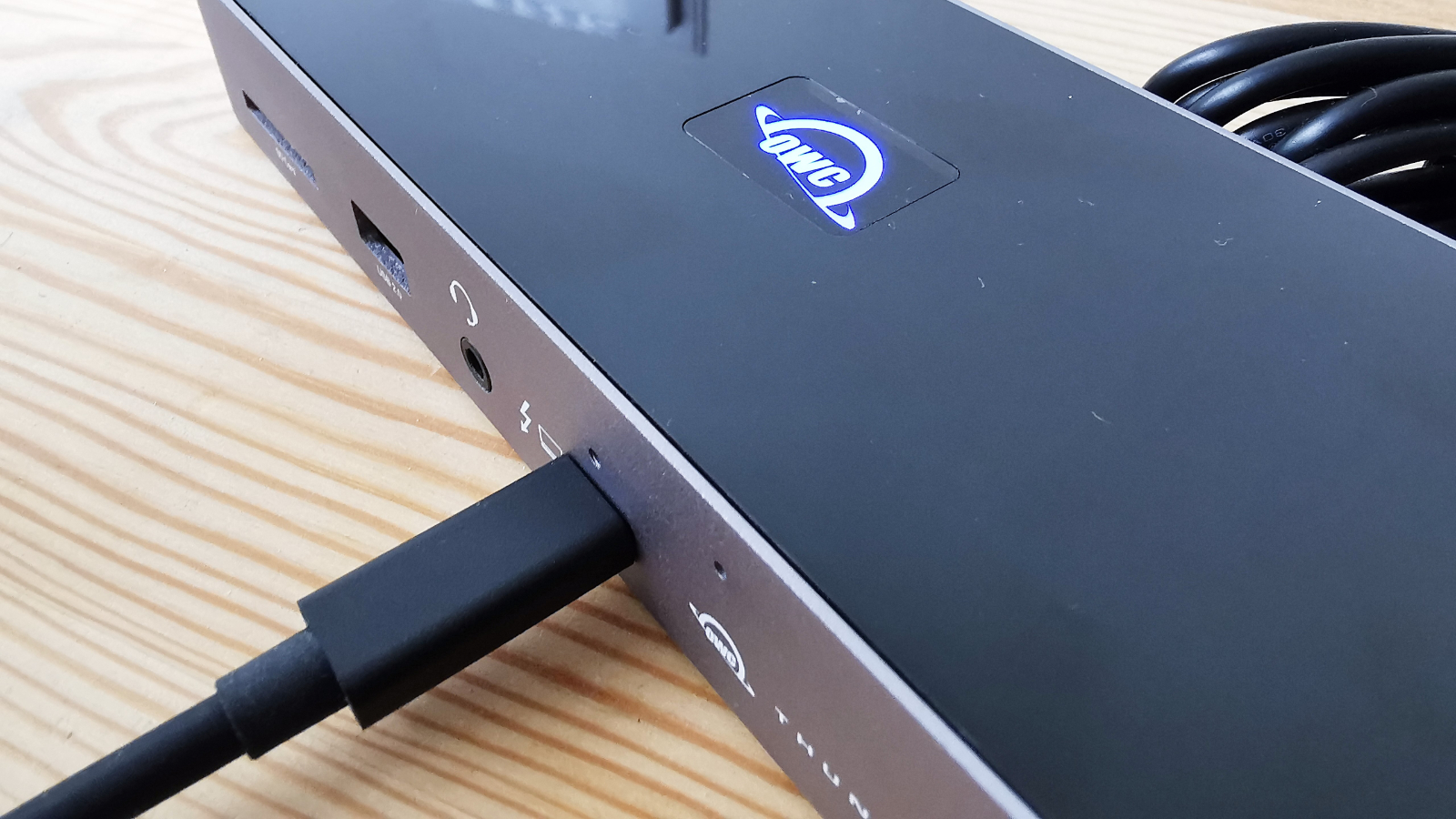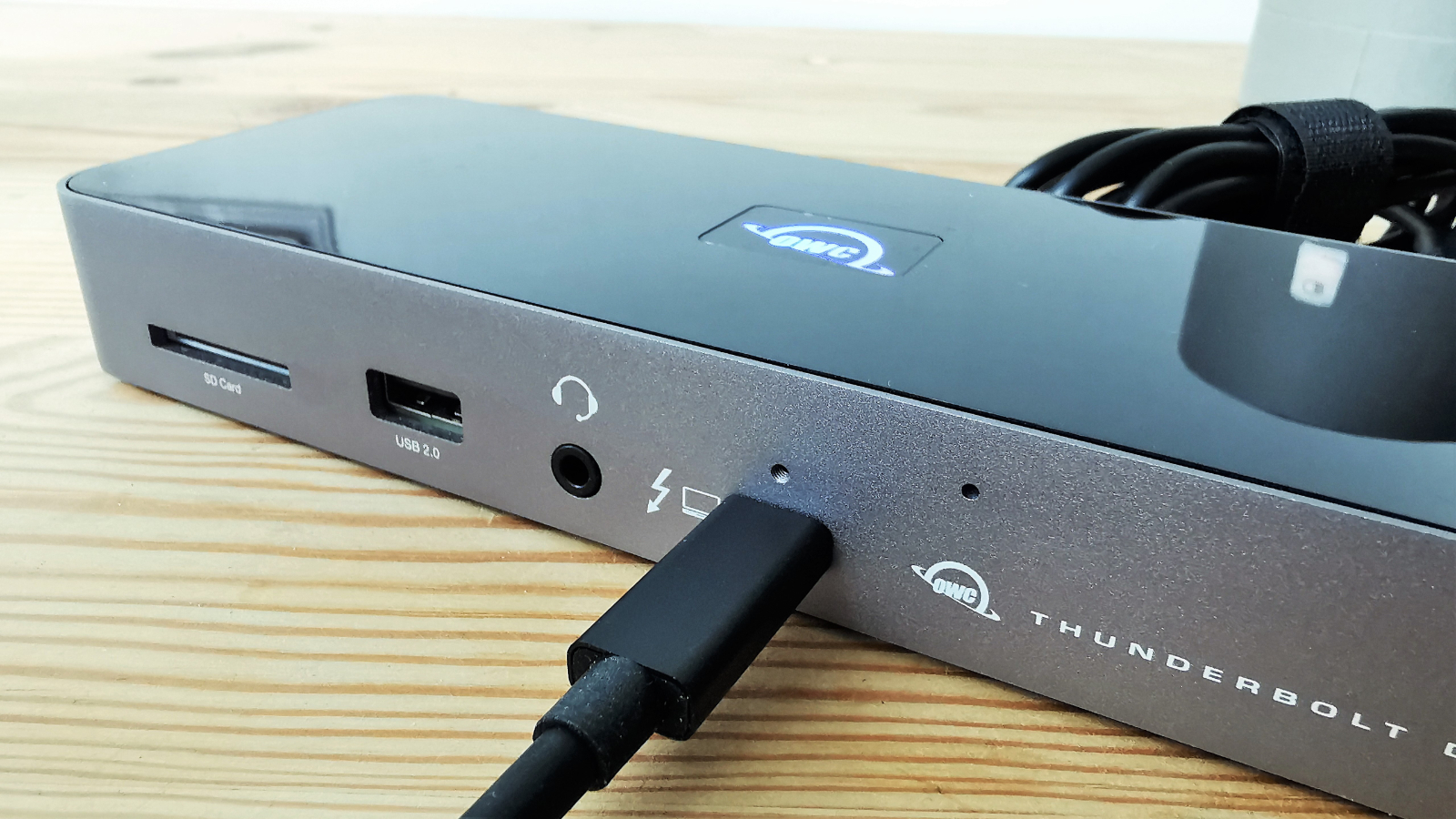TechRadar Verdict
It might not sound very special, but the OWC Thunderbolt Dock packs plenty of useful features and great flexibility for those that have systems with Thunderbolt 4 or Thunderbolt 3.
Pros
- +
Thunderbolt 4
- +
Delightful engineering
- +
Affordable
- +
90 watts charging
Cons
- -
Only PCs have TB4 currently
Why you can trust TechRadar
Not long ago, we covered the OWC Thunderbolt Hub, an entry-level dock that supported Thunderbolt 4 technology for those lucky enough to have it.
The Hub is an excellent product, and for a modest amount more, the OWC Thunderbolt Dock offers more ports, greater flexibility and is constructed to the same high standards.
Is there anything not to like in this elegant and desirable peripheral?

Price, availability and value
At the time of writing the OWC Thunderbolt Dock is only available on pre-order at Macsales.com for $279 (€229). And, the next batch is expected to ship in July 2021, with free shipping to the EU.

Design
For those unfamiliar with the concepts behind this type of docking station, it’s primarily meant to provide a single cable connection to a laptop that exchanges both power to charge that device and data.
That’s not to say that this hardware couldn’t be used with a desktop system, and it could be useful with one, but the focus here is that single cable link that can connect a mobile system to local services and peripherals.
Before we dive into what makes the OWC Thunderbolt Dock so desirable for that job, some clarity is needed to place this product in the greater scheme of Thunderbolt devices from OWC.
Sign up to the TechRadar Pro newsletter to get all the top news, opinion, features and guidance your business needs to succeed!
This product is a notch up from the OWC Thunderbolt Hub and OWC Thunderbolt 3 Dock but slightly down from the OWC Thunderbolt 3 Pro Dock that offers enhanced 2.5Gbit LAN connectivity.
Perhaps calling it the Thunderbolt 4 Dock might have more accurately defined these relationships.
I’m mentioning this because the naming slightly infers that it isn’t as good as the Thunderbolt 3 Dock when it is better specified in most respects.
That specification includes 11 ports that include one Thunderbolt 4 uplink and three downlinks, three USB-A 3.2 Gen 2 (10Gbit/s) ports, a single USB-A 2.0, a single Gigabit Ethernet LAN Port, single 3.5mm Audio Jack and an SD Card reader.
All these ports are on the rear or front, with the ends only utilised for security slots.
What’s missing is there is no dedicated video out ports for DisplayPort or HDMI. Instead, you can use adapters (not included) to break out the video standards you need from the Thunderbolt 4 ports, as required.
Logically, the side with the single Thunderbolt port, audio jack and Card Reader should face the user and their Thunderbolt connected device, with all the other ports facing away.

Included in the box is a large LiteOn branded PSU rated to 135 watts, a short Thunderbolt cable and a US-spec three-pin power cable.
Getting the unit operational is merely a matter of attaching the PSU to power and the Thunderbolt cable to a suitably featured system. Like other OWC designs we’ve tested, there is no power on/off switch.
This hardware is backwards compatible with Thunderbolt 3 ports, making it available to Apple Mac users and any newer Windows PCs with either the same outputs or the latest Thunderbolt 4 technology.

Hardware
As with all Thunderbolt hubs and docks, the distribution of power is the critical detail that can make or break a design.
With a 135 watt PSU, that’s another 25 watts more than the Thunderbolt Hub, and the amount available to charge a connected laptop is now boosted to 90 watts. That’s much more than the typical 85 watts or 87 watts needed by charging performance laptops, and it allows the extra 45 watts for distribution downstream.
Each Thunderbolt 4.0 port can hand down 15W, and the USB 3.2 Gen 2 7.5W, so there is a potential shortfall here, but that assumes the charging system needs all of the 90 watts it can deliver.
Technically, the shared power situation is slightly worse than the Thunderbolt Hub that had 50 watts to splash around but that could only charge up to 60 watts, making this a superior option for those with a powerful laptop.
What confuses some about Thunderbolt 4 is that it has precisely the same 40Gbit/s throughput as Thunderbolt 3, and therefore peripheral devices won’t have more bandwidth than they would have on previous technology.
That’s true, but what Thunderbolt 4 offers is the ability to be forwards compatible with USB 4.0 when that arrives, 32GB/s data transfers, and the ability to support dual 4K displays or a single 8K display. Thunderbolt 3 only supports a single 4K display at 60Hz and is capped at 16Gb/s for data transfer.
And, you can also establish a Thunderbolt network using this technology that allows 10 Gbps LAN transfers over 2m cables.

While it doesn’t have more bandwidth, it does allow the user to focus the 40Gb/s available more specifically on data transfers or video, whichever is most important to them.
There are likely to be hubs and docks made that tinker with the distribution of bandwidth while trading flexibility. They could include HDMI or DisplayPort outlets or offer inbuilt NVMe storage, but the approach taken by OWC with their docking station allows for maximum flexibility while not excluding most of those alternative possibilities with adapters.
Thunderbolt 5, or whatever those designing it choose to call it, reputedly is to double its bandwidth the 80Gbit/s. But currently, Thunderbolt 4 is the best option available to those that use this technology.
In use
The OWC Thunderbolt Dock is like its Hub brother, incredibly easy to deploy. Thunderbolt 4 cables can’t even be incorrectly orientated, and it’s just a matter of plugging it into most systems.
The only caveats to operation are that any laptop that needs charging must use the front-facing port. And, there is an OWC utility, the OWC Dock Ejector, designed to elegantly disconnect it from a Windows or Mac system without creating issues with connected storage devices.
For those wanting to connect downstream displays, additional Thunderbolt to HDMI or DisplayPort adapters are required. These aren’t very expensive, but if you have multiple screens to connect, budget extra for these items.
The official OWC Thunderbolt 3 dual display adapter costs $68, but for those with a single screen connected by HDMI, there are third-party options widely available that cost a fraction of this amount.

Competitors
The number of Thunderbolt 4 supporting docks available is relatively few at this time, with Caldigit, Glyph and Plugable yet to release hardware that supports this TB4 new standard.
Supporting Thunderbolt 4, the only branded alternative is the Kensington SD5700T Thunderbolt 4 Dual 4K Docking Station, with an almost identical specification to the OWC Thunderbolt Dock.
Official pricing direct from Kensington in the US is $319.99, making it marginally more expensive than the OWC option.

Final verdict
Yet another understated but perfectly specified product from OWC, the Thunderbolt Dock provides maximum flexibility for those using Thunderbolt 3 or 4 in anger.
Where it beats the cheaper OWC Thunderbolt Hub is the ability to deliver up to 90 watts of power to a connected laptop, enabling even the most demanding ones to both perform and be charged at the same time.
For the functionality available, the cost isn’t high and reflects well the quality of its construction. However, it is worth noting that you might need additional cables or adapters depending on how you intend to use yours.
Our only concern about OWC products is that they’re not always available, being a victim of their popularity, it appears.
Therefore for those wanting one, don’t delay in your purchase as it might be some months until they return to stock.
- We’ve picked out the best laptop docking stations
Mark is an expert on 3D printers, drones and phones. He also covers storage, including SSDs, NAS drives and portable hard drives. He started writing in 1986 and has contributed to MicroMart, PC Format, 3D World, among others.

